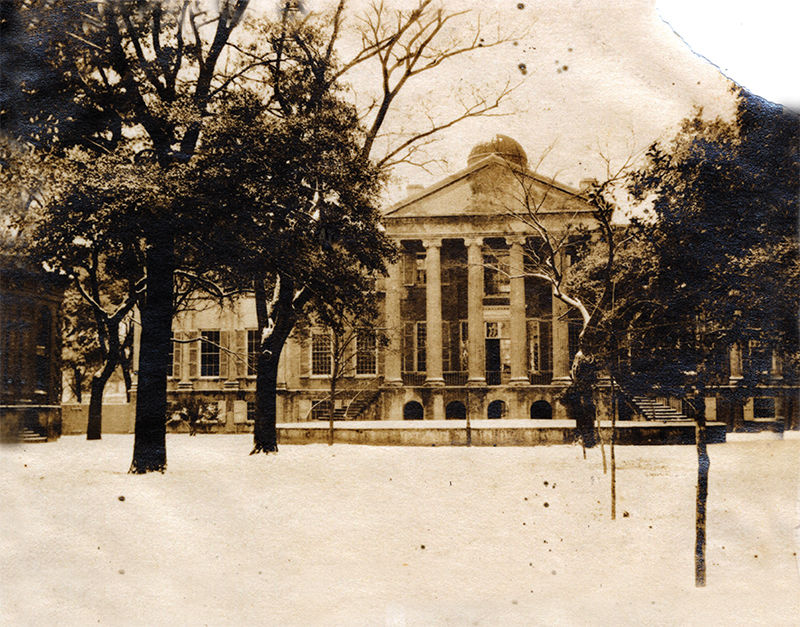This month marks two years since the Holy City was most recently covered in snow, and it rings in 250 years for the College of Charleston (CofC).

Here, Randolph Hall (originally constructed in 1829), is pictured during a snowstorm in the early 20th century. The college was established out of a desire to change the educational status quo. According to the institution, during the colonial period students from affluent families were sent abroad for school, but on January 30, 1770, Lieutenant Governor William Bull requested a provincial college for the colony, which led to a bill allocating city land for a school. Due to the conflict surrounding the Revolutionary War, classes did not commence until 1790, as many of the founders of the college—including Thomas Heyward, Arthur Middleton, Charles Pickney, and John Rutledge—were signers of the Declaration of Independence or framers of the US Constitution. The student body consisted of local white men before white women were permitted to attend in 1917, and the college was integrated 50 years later. Enrollment has grown exponentially over the years, from 68 students in 1905, to 1,500 by 1972, and to more than 10,000 today. A notable feature of the university is its picturesque Cistern Yard, which is as photo-worthy today as it was a century ago—especially after a snowfall.